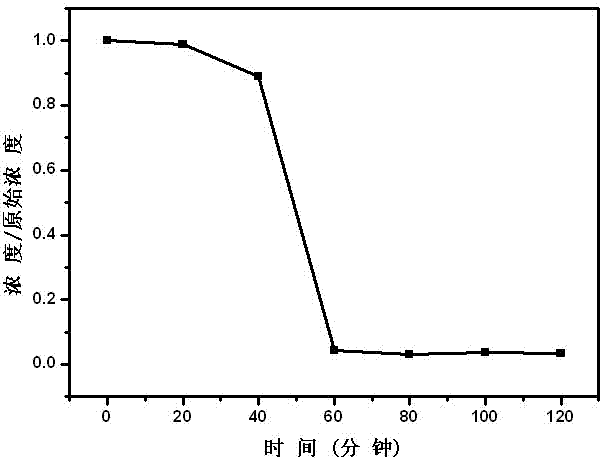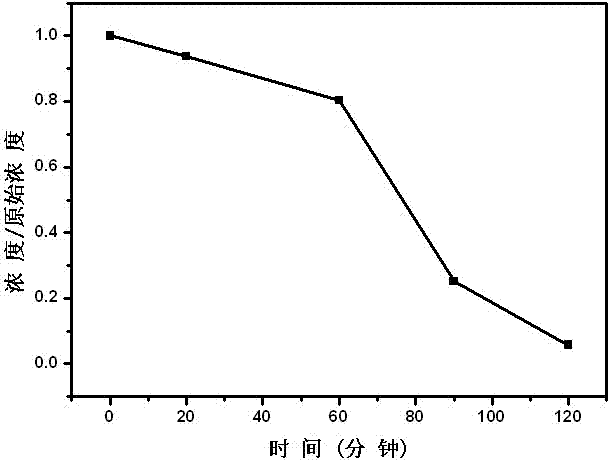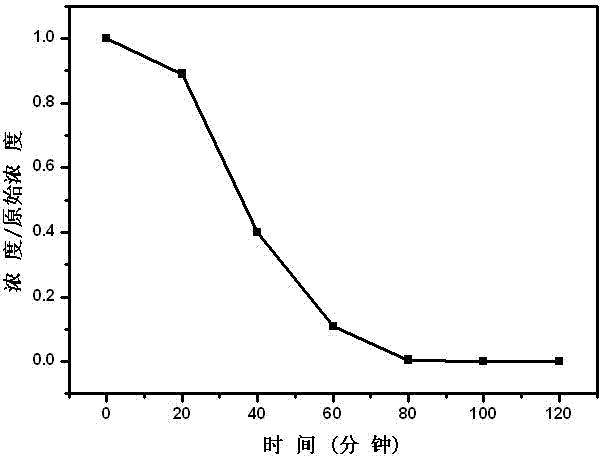Soil restoration method based on oxygen activation of iron powder and polyphosphoric acid molecules
A remediation method and technology of polyphosphoric acid, applied in the field of environmental chemistry, can solve the problems of unsustainable pollutant treatment effect, gap in EDTA activity, inconvenient storage and transportation, etc. and cost-effective balance
- Summary
- Abstract
- Description
- Claims
- Application Information
AI Technical Summary
Problems solved by technology
Method used
Image
Examples
Embodiment 1
[0035] Treatment of Atrazine Contaminated Soil
[0036] In this example, the simulated polluted kaolin with self-prepared atrazine was used as the experimental object to carry out the ZVI / TPP / air soil treatment experiment. The concentration of atrazine was 50 mg / kg, and the mass ratio of ZVI (zero-valent iron) and organic matter-contaminated soil in the reaction system was 1:100. Take 6 g of contaminated soil, 0.056 g of zero-valent iron, 10 mL of TPP solution with a concentration of 100 mmol / L, and 30 mL of water in a reaction vessel, and stir the slurry evenly with a magnetic stirrer at 800 rpm, using an air pump Blast in air. figure 1 It was shown that the degradation rate of atrazine reached 50% after 50 min of reaction; when the reaction was extended to 60 min, the degradation rate of atrazine reached 99%.
Embodiment 2
[0038] Treatment of 2,4-Dichlorophenol (2,4-DCP) Contaminated Soil
[0039] The simulated contaminated kaolin with 2,4-DCP was configured to carry out the oxidative degradation experiment of the ZVI / TPP / air system. The concentration of 2,4-DCP in contaminated soil was 600 mg / kg. The mass ratio of ZVI and organic contaminated soil in the reaction system was 1:100. Add 6 g of simulated contaminated soil into the slurry reactor, stir the slurry with a magnetic stirrer at a speed of 800 rpm, and open the reactor in the air without aeration. figure 2 It was shown that after 1 h of reaction, the degradation rate of 2,4-DCP in soil was 80%; after 2 h of reaction, 2,4-DCP in the system was completely degraded.
Embodiment 3
[0041] Treatment of Alachlor Contaminated Soil
[0042] In this example, the oxidative degradation experiment of the ZVI / TPP / air system was carried out by using the simulated contaminated kaolin prepared by ourselves as the experimental object. The concentration of alachlor was 500 mg / kg. The mass ratio of ZVI and organic contaminated soil in the reaction system was 1:100. Take 6 g of contaminated soil, 0.056 g of zero-valent iron, 15 mL of TPP solution with a concentration of 100 mmol / L, and 30 mL of water in a reaction vessel, and stir the slurry evenly with a magnetic stirrer at 800 rpm, using an air pump Blast in air. image 3It was shown that the degradation rate of alachlor reached 60% after 40 min of reaction; when the reaction was extended to 70 min, the degradation rate of alachlor reached 99%.
PUM
| Property | Measurement | Unit |
|---|---|---|
| Concentration | aaaaa | aaaaa |
Abstract
Description
Claims
Application Information
 Login to View More
Login to View More - R&D
- Intellectual Property
- Life Sciences
- Materials
- Tech Scout
- Unparalleled Data Quality
- Higher Quality Content
- 60% Fewer Hallucinations
Browse by: Latest US Patents, China's latest patents, Technical Efficacy Thesaurus, Application Domain, Technology Topic, Popular Technical Reports.
© 2025 PatSnap. All rights reserved.Legal|Privacy policy|Modern Slavery Act Transparency Statement|Sitemap|About US| Contact US: help@patsnap.com



